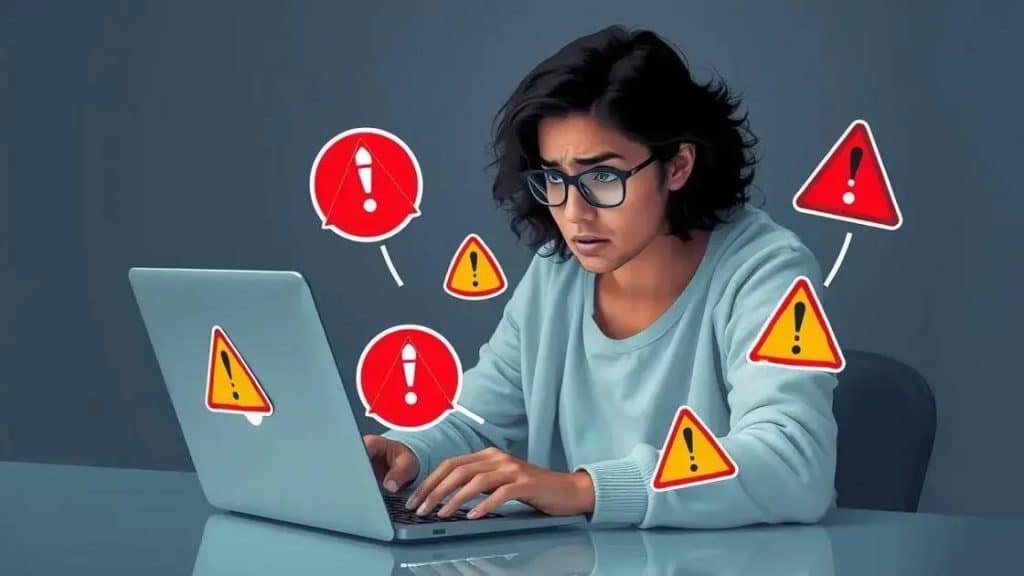Online shopping scams: how to protect yourself today

Online shopping scams can include fake retailers, phishing attempts, and counterfeit goods; recognizing signs and knowing steps for protection can help ensure a safe shopping experience.
Online shopping scams are becoming increasingly common, leaving many unsuspecting shoppers vulnerable. Have you ever wondered what red flags to watch for? Let’s dive into the world of online shopping to keep you informed and safe.
Common types of online shopping scams
Common types of online shopping scams can trick even the most careful buyers. Knowing these scams can help you stay protected while shopping online.
1. Fake Online Retailers
Some scammers create websites that look like famous stores. They offer products at very low prices, but once you pay, you’ll never receive the item.
2. Phishing Scams
These scams often come in the form of emails that seem legit. They ask you to click on a link to verify your account but lead to fake sites designed to steal your information.
3. Non-Delivery Scams
In these scams, you might pay for an item that is never delivered. Often, the seller disappears after you make the payment.
4. Counterfeit Goods
Scammers may sell fake items that look real but are of poor quality. Always check reviews and seller ratings before buying.
To protect yourself, you should always check for reviews and the website’s URL. Look for secure connections (HTTPS) and verified payment options. By recognizing these types of online shopping scams, you can safeguard your personal and financial information. Be sure to report any suspicious activities to the authorities.
How to identify fraudulent websites

Identifying fraudulent websites is crucial for safe online shopping. Many scams rely on deceiving users into thinking they are purchasing from reputable sites.
Check the Website URL
Always inspect the URL before making a purchase. Look for HTTPS in the address. The “S” indicates that the site is secured. A lack of HTTPS can be a red flag.
Look for Contact Information
Reputable websites provide clear contact details. Verify their phone number and email address. If you can’t find this information or it’s vague, consider shopping elsewhere.
Read Reviews and Ratings
Check independent review sites before making a purchase. Look for patterns in customer feedback. If reviews are overwhelmingly negative, it’s best to stay away.
Many legitimate sites also have a return policy listed. If a website doesn’t provide this information, it could be a scam. Always be cautious. Scammers often mimic the layout of trusted websites, so look closely at logos, images, and wording. A well-known brand with an unfamiliar website should raise suspicions.
Report any fraudulent sites to authorities to protect others. Online safety is essential for a pleasant shopping experience. By knowing how to identify fraudulent websites, you can shop with greater confidence.
Tips for safe online shopping
Safe online shopping is essential to protect your personal and financial information. Following a few simple tips can help you enjoy a secure shopping experience.
1. Use Secure Connections
When shopping online, always use a secure network. Avoid public Wi-Fi for transactions. Instead, use a private network or your mobile data to reduce risks.
2. Verify Website Security
Ensure the website has a secure connection by looking for HTTPS in the URL. A padlock icon in the address bar also indicates a secure site. If these elements are missing, consider shopping elsewhere.
3. Pay with Trusted Methods
Use trusted payment methods like credit cards or reputable services such as PayPal. These options often offer additional fraud protection. Avoid direct bank transfers to unknown sellers.
4. Keep Software Updated
Always keep your devices updated with the latest software and security patches. This helps protect against malware and security threats.
Before making a purchase, read the site’s privacy policy. This tells you how your information will be used and stored. Stay away from sites that do not have this information clearly explained. Regularly monitor your bank statements for any unauthorized charges, and report them immediately.
By implementing these tips, you can shop online with greater confidence and peace of mind.
Steps to take if you fall victim

If you suspect you’ve fallen victim to a scam, it’s important to act quickly. Scammers can cause serious financial harm if you don’t take the right steps immediately.
1. Report the Scam
Contact your bank or credit card company right away. They can help you dispute unauthorized charges and potentially recover your funds. Reporting to them should be your first move.
2. Change Your Passwords
If you provided personal information online, change your passwords immediately. Be sure to update passwords for your email, bank accounts, and any sites where you stored your credit card information.
3. Monitor Accounts Regularly
Keep an eye on your bank statements and credit reports. Look for any unfamiliar transactions or accounts. Early detection can help prevent further damage.
4. Contact Authorities
Report the incident to your local authorities and the Federal Trade Commission (FTC). They collect reports about fraud and can help prevent others from becoming victims.
Consider placing a fraud alert on your credit report. A fraud alert warns creditors to take extra steps to verify your identity before opening new accounts. You can also freeze your credit report for more protection.
Taking these steps quickly can reduce the impact of a scam. Remaining vigilant and proactive is key to regaining your security after falling victim to online fraud.
In conclusion, staying safe while shopping online is vital in today’s digital world. By understanding the common scams and taking proactive steps to protect yourself, you can enjoy a secure shopping experience. Always verify websites, keep your information private, and know the actions to take if you fall victim to a scam. Being vigilant and informed is your best defense against online fraud.
FAQ – Frequently Asked Questions about Online Shopping Scams
What should I do if I think I’ve been scammed while shopping online?
Immediately contact your bank or credit card company to report unauthorized charges and take steps to secure your accounts.
How can I identify a safe online shopping website?
Look for HTTPS in the URL, check for contact information, and read customer reviews to ensure the site is legitimate.
What types of online shopping scams should I be aware of?
Be cautious of fake online retailers, phishing scams, non-delivery scams, and counterfeit goods.
What are the best practices for safe online shopping?
Use secure connections, verify website security, pay with trusted methods, and keep your software updated.





